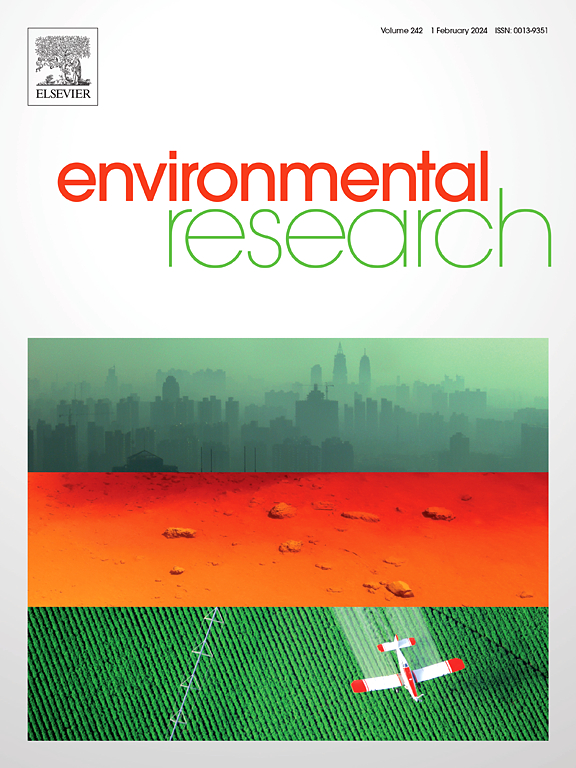2000年至2023年使用机器学习的地下水污染研究的最新进展:文献计量分析。
IF 7.7
2区 环境科学与生态学
Q1 ENVIRONMENTAL SCIENCES
引用次数: 0
摘要
地下水污染已成为全球性挑战,对人类健康和生态环境构成重大威胁。机器学习凭借其在数据中捕获非线性关系的卓越能力,在解决地下水污染问题方面显示出巨大的潜力。本综述对2000年至2023年间发表的1462篇论文进行了全面的文献计量学分析,概述了目前的研究状况,分析了发展趋势,并提出了未来的方向。分析显示,在24年的时间里,出版物呈增长趋势,自2020年以来急剧扩张。中国、美国、印度和伊朗被认为是论文发表和引用的主要贡献者,吉林大学、美国地质调查局和大不里士大学等知名机构也参与其中。此外,关键词频率分析表明,主成分分析(PCA)是最常用的方法,其次是人工神经网络(ANN)和层次聚类分析(HCA)。研究最多的地下水污染物包括硝酸盐、砷、重金属和氟化物。随着机器学习的快速发展,研究重点已经从水化学演化分析、水质指标评价、地下水脆弱性评价等基本任务发展到污染物浓度预测、污染风险评估、污染源识别等更为复杂的问题。尽管取得了这些进步,但与数据质量、数据稀缺性、模型泛化和可解释性相关的挑战仍然存在。未来的研究应优先考虑数据共享,提高模型可解释性,拓宽研究视野,推进理论指导的机器学习。这将增强我们对地下水污染机制的认识,并最终促进更有效的污染控制和修复策略。综上所述,本文为这一关键领域的研究人员和政策制定者提供了宝贵的见解和建议。本文章由计算机程序翻译,如有差异,请以英文原文为准。
Recent advances in groundwater pollution research using machine learning from 2000 to 2023: A bibliometric analysis
Groundwater pollution has become a global challenge, posing significant threats to human health and ecological environments. Machine learning, with its superior ability to capture non-linear relationships in data, has shown significant potential in addressing groundwater pollution issues. This review presents a comprehensive bibliometric analysis of 1462 articles published between 2000 and 2023, offering an overview of the current state of research, analyzing development trends, and suggesting future directions. The analysis reveals a growing trend in publications over the 24-year period, with a sharp expansion since 2020. China, the USA, India, and Iran are identified as the leading contributors to publications and citations, with prominent institutions such as Jilin University, the United States Geological Survey, and the University of Tabriz. Moreover, keyword frequency analysis indicates that principal component analysis (PCA) is the most commonly used method, followed by artificial neural network (ANN) and hierarchical clustering analysis (HCA). The most studied groundwater pollutants include nitrate, arsenic, heavy metals, and fluoride. As machine learning has rapidly advanced, research focuses have evolved from fundamental tasks like hydrochemical evolution analysis, water quality index evaluation, and groundwater vulnerability assessments to more complex issues, such as pollutant concentration prediction, pollution risk assessment, and pollution source identification. Despite these advances, challenges related to data quality, data scarcity, model generalization, and interpretability remain. Future research should prioritize data sharing, improving model interpretability, broadening research horizons and advancing theory-guided machine learning. These will enhance our understanding of groundwater pollution mechanisms, and ultimately facilitate more effective pollution control and remediation strategies. In summary, this review provides valuable insights and suggestions for researchers and policymakers working in this critical field.
求助全文
通过发布文献求助,成功后即可免费获取论文全文。
去求助
来源期刊

Environmental Research
环境科学-公共卫生、环境卫生与职业卫生
CiteScore
12.60
自引率
8.40%
发文量
2480
审稿时长
4.7 months
期刊介绍:
The Environmental Research journal presents a broad range of interdisciplinary research, focused on addressing worldwide environmental concerns and featuring innovative findings. Our publication strives to explore relevant anthropogenic issues across various environmental sectors, showcasing practical applications in real-life settings.
 求助内容:
求助内容: 应助结果提醒方式:
应助结果提醒方式:


